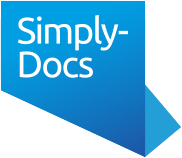The new Construction Design and Management (CDM) Regulations 2015 are now in force. Statistically there are more injuries and fatalities on smaller, previously unregulated building projects than on larger ones. The Health and Safety Executive (HSE) has decided to address this issue by requiring all projects to have someone overseeing health, safety and welfare in both the pre-start and construction phases.What does the Builder need to know?
From 6th April 2015, every job, including domestic work, will now require a CDM Principal Contractor (PC) who will take overall control for the day-to-day running of the project. This is the same whether you are a building company with in-house tradesmen or a one-man band that brings in traders as needed. Someone will have to be appointed by the client as Principal Contractor.
The builder – now called the Principal Contractor has a range of duties to fulfil on all projects, large or small, including:
• The builder must prepare a Construction Phase Health and Safety Plan.The builder needs to be certain that the contractors they employ are competent, not only to do their job, but from a health and safety perspective as well. Price is always an important factor, but the Principal Contractor will need to be happy that the chosen subbie is able to carry out their works safely without making shortcuts.
• The Principal Contractor will need to make sure that someone responsible is on site at all times, for example, a trusted sub-contractor foreman. No matter who is left in charge – the Principal Contractor is responsible if they allow shortcuts to be taken or the agreed procedures to be bypassed.
For more detailed information on the Principal Contractor’s duties please click here for our Simply-Docs information page on Construction (Design & Management) (CDM) Regulations 2015 for Builders.
What does the Client need to know?
Under the regulations, non-domestic clients will have much more direct responsibility than before. In addition, some building works that you may have assumed would be regarded as “domestic” will now fall within the scope of the regulations. A “non-domestic client” is a person or a company who is having the works done as part of a commercial enterprise. That could be a business building, a new factory or office extension, or a residential or commercial landlord refitting some of their rental properties. Building an office at the end of your garden in order to work from home would make you a non-domestic client. As a rule: if the client will get a business income from the works, they are a non-domestic client.
The practical impact of these regulations is that non-domestic clients will now have even more legal duties in respect of health and safety on-site and more clients will fall into the non-domestic category.
The non-domestic client’s new duties include:
• The client is now required to make sure that health and safety has been factored into the project, and that sufficient funding has been allowed in the budget for this.
• The client must appoint, in writing, a Principal Designer (PD) to oversee the design and planning of the project, to put in place all the health and safety procedures, and to create (or at least organise) the Health and Safety File.
• The client must ensure that both the PD and PC are competent to carry out their role.
If the client doesn’t appoint either a PD or PC, the duties of both will become the client’s by default, so it really is in the client’s best interest to surround themselves with suitably qualified professionals to help them through the process.
The client has many additional duties, for more information on these duties, please click here for our Simply-Docs information page on What Duties Does The Client Have Under The CDM Regulations 2015?
